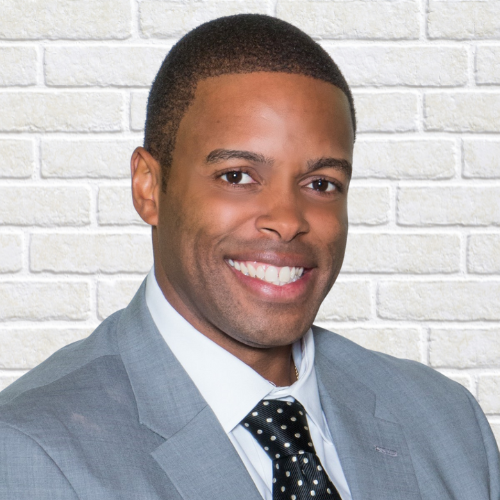WTOP: 5 ways nonprofits can…
Leaders of mission-driven organizations that aim to create a diverse, equitable and inclusive environment understand that these efforts must apply to all aspects of the talent management lifecycle. They understand that the way an employee experiences diversity, equity and inclusion (DEI) in their organization starts from the recruiting and hiring stages –and sometimes even before. Aligning all aspects of DEI and talent attraction strategies, however, requires commitment. And even before that, it requires leaders to understand the difference between having a commitment to DEI versus having a DEI strategy. So, what is the difference?
If commitment is the plan then action is the strategy. A DEI strategy is about operationalizing. It is the tasks and activities performed that bring a DEI commitment to life. It is extremely challenging to have a successful DEI strategy without a guiding commitment.
A DEI commitment and strategy move in tandem with the organizational understanding that execution is an ongoing process. A commitment to diversity will require agility and the ability to adapt to ever-changing environments and progressive DEI objectives. While an organization can lay the foundation to executing a recruitment plan with DEI at its core to ensure that the final candidate pool is diverse and representative of the desired candidate pool, the strategy will not always go according to plan. The commitment is being willing to realign strategy to make sure the desired results are achieved.
Spotting & Eliminating Bias Interrupters
When aiming to identify and minimize bias from your talent attraction strategy, the goal is to look for bias interrupters from start to finish. Below are a few pointers to consider throughout the recruiting process.
Start with an understanding that language is key. Consider language and perception at every step of the job ad creation process. Tools like Gender Decoder are particularly helpful because they help users ensure that some populations are not being isolated from job descriptions. Apart from using gendered pronouns, language also matters in terms of how adjectives are used. Using words like strong, for example, can unintentionally project masculine preferences. Instead, make sure that the language used is encompassing and inclusive when describing the skills that are necessary for a role. This may be a good time to create a list of bias-free terms and terms to avoid. Doing so will simplify the ad creation process and operationalize your commitment.
Think about the placement of job ads and posts. Organizations that seek to expand their candidate pools use a broad variety of platforms and channels to get in front of diverse candidates. While traditional platforms like LinkedIn or Indeed have broad reach, they tend to exclude some groups. The way organizations establish pipelines has a direct impact on the diversity of their final candidate pools. Creating a pipeline for diverse talent requires ongoing engagement rather than sporadic efforts. Becoming creative is essential and one way to ensure diverse talent sees your job ads. One way is to establish quality relationships with entities in the communities that could be a pipeline funnel for talent whether those are HBCUs, diverse membership organizations, Indigenous groups or other affinity groups.
Use blind resume reviews to highlight a candidate’s skills and abilities. Blind resumes conceal details like a candidate’s name, address, schools or graduation year that often indicate a potential hire’s race, gender identity, religion or socioeconomic status or background. Each of these identifiers can influence hiring decisions either negatively or affirmatively. Rather than placing the focus on these identifiers, recruiters should concentrate on candidates’ skills and prior work experience and how those factors qualify an individual for the position. It is far easier to reduce bias in hiring when candidates are evaluated solely on skillset and relevant work experience.
Be intentional about how the interviewing process is designed. Interview panels should reflect diversity, not only across the different dimensions of diversity but also in terms of the different teams and career levels within the organization. Different age groups, seniority levels, races, genders can bring diverse and rich perspectives. During each interview, reach for consistent documents like rubrics, a list of standardized questions and evaluation templates. Essentially, ensure that all candidates are asked the same questions in the same order and evaluated by the same rules.
See equity as one of the most important aspects of the recruitment process. Beyond the way in which interviews are conducted, equity shortcomings also come up in relation to pay. Issues of inequality can also show up within established pay ranges. For example, if there is an established hiring range of $110,000 to $120,000, ensure that range is communicated to all candidates. Today’s savvy candidate wants to see these details published with the job ad, and a LinkedIn survey shows that over 70% of professionals want to hear about salary in the first message from a recruiter. Organizations should also look internally to see what the last person in the role is paid and how it relates to their peers outside the organization. The goal here is to look at pay equity internally and externally in the broader market to help ensure equity for a new person coming in.
Finally, put in place specifications for whether the recruitment process can move forward. One example is using a benchmark of 20%. So, for example, if there are not at least 20% diverse candidates, the recruitment will not go forward. If the candidate pools misses the 20% benchmark, the organization then has an opportunity to stop and rethink the recruitment strategy, course correct and in some cases, restart the process.
For more information on how, where and why to align every aspect of your DEI and talent attraction strategies, watch the webinar recording, Aligning Your Organization’s DEI Strategy & Priorities with Your Executive and Professional Searches, and the companion Q&A session.
Let’s examine some common forms of bias (remembering that these are often subconscious, not malicious)
- Confirmation Bias – We see this when a 1st round interviewer raves about a candidate to the 2nd round interviewer, setting the 2nd round interviewer up to think that the candidate is great without having the opportunity to make their own assessment. You never want to have one person escorting a candidate through multiple interview rounds.
- Ingroup Bias – Does the candidate remind you of your cousin or best friend? Great, but not relevant. Try to notice when this happens.
- Individual Bias – Have multiple interviews in each round to reduce the opportunity for in group bias.
- Halo Effect – They went to Harvard. Cool! But keep paying attention to all of the other things they are saying throughout the interview.
- Recency Bias – Evaluate your candidates after meeting them, not as a group once you’ve completed all interviews because you’ll add greater weight to those interviewed more recently.
- Hindsight Bias – “in the past I’ve known if someone would be a great employee within 5 minutes of their interview, so that will be true in the future”.
- Optimism/Pessimism Bias – pay attention to your own mood or circumstances when evaluating candidates.
- Status Quo Bias – Don’t be afraid to take risks or challenge your norms when hiring.
Contributing Authors
 |
 |
|
Bryan W. Jackson, MA
Senior Consultant, EDIJ
|
Sophia LaFontant, CSP
Consultant, Search, Impact Search Advisors by Nonprofit HR
|





























